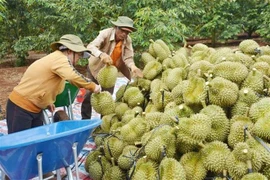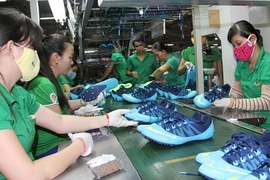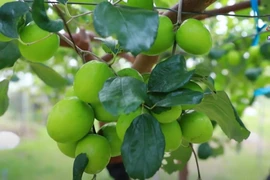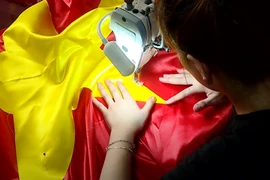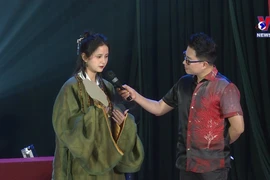For people in southern provinces, mứt dừa (candied coconut) is an indispensable dish during Lunar New Year (Tet) festival.
For more than 40 years, Mr. Nguyen Thien Phuc's facility in the southern province of Ben Tre has been producing batches of coconut flakes for Tet.
For a long time, the dish was made by hand. However, the recent use of machines has made production easier and helped the dish become more eye-striking.
There are a number of stages to make candied coconut ribbons, but cooking coconut slices with sugar at a proper temperature to ensure they are not burnt is the most important step.
"Mixing coconut meat with sugar needs attention because a proper temperature significantly contributes to the dish’s striking appearance," Mr Phuc, a skilled candied coconut maker, offered his tips in making delectable candied coconut.
Candied coconut is made from natural ingredients. To make it colourful, people use pineapple leaves to turn it into green, taro leaves to turn it violet and durian to turn it yellow.
Nguyen Thien, the owner of the Huu Nghi Candied Coconut Facility, said they also produced coconut flakes for conventional use on normal days. The dish has been become popular in recent years with increasing consumption in both northern and southern provinces.
Amid an ocean of confectionary labels both domestic and foreign, the sweet treat still brings lunar New Year (Tet) flavour to the southern region.
Ben Tre currently counts over 30 products made from coconut and coconut flesh. They have been exported to more than 50 countries.
According to Thien, coconut flakes preserved Tet flavour and it’s cheap.
It is not a hard work to make coconut ribbons so most families in southern provinces do it themselves for Tet.
"Enjoying one slice of sweet and tasteful coconut, we can feel a traditional Tet flavour and deep affection for the motherland," Thien added.-VNA
